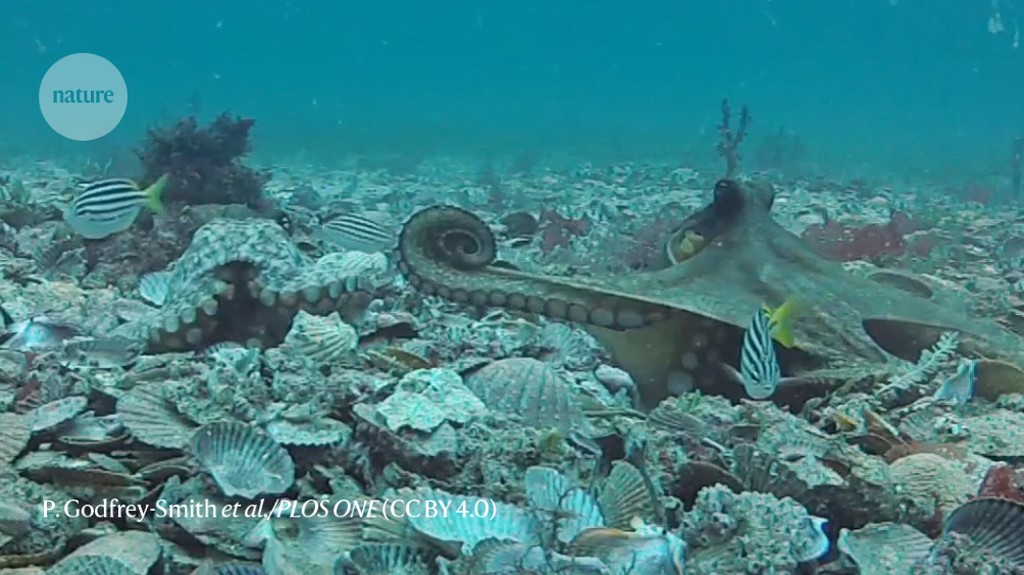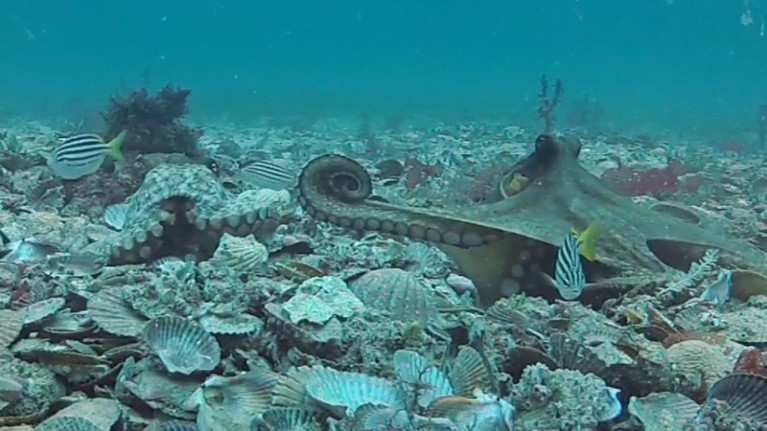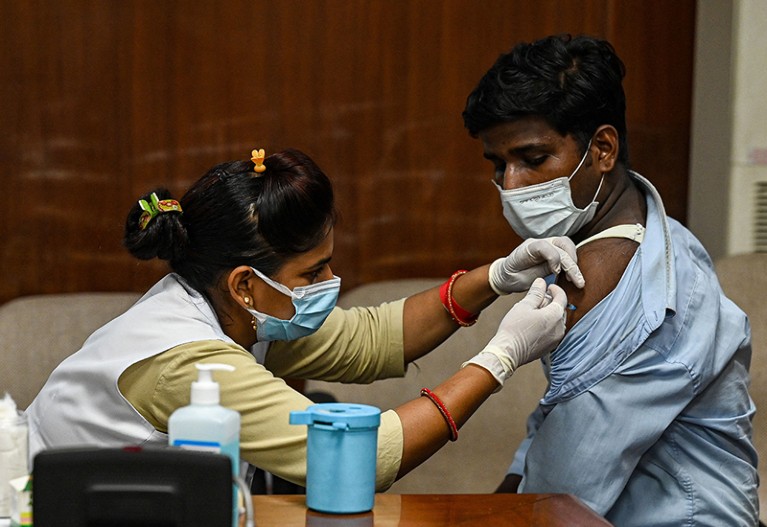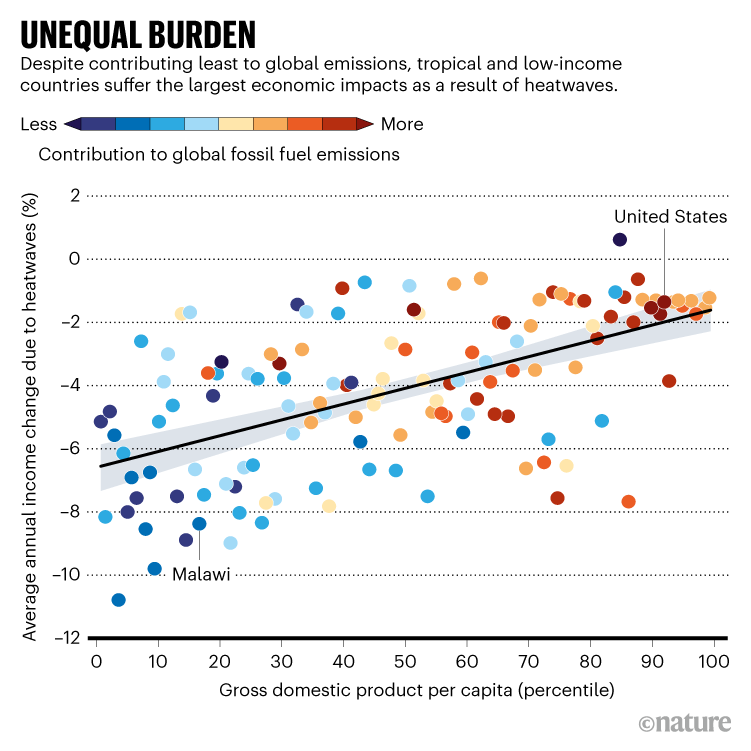This female gloomy octopus (left) was spotted tossing away empty shells after eating.Credit: P. Godfrey-Smith et al./PLOS ONE (CC BY 4.0)
Duck! Octopuses throw things at each other
For the first time, octopuses have been spotted throwing things — at each other.
Octopuses are known for their solitary nature, but in Jervis Bay, Australia, the gloomy octopus (Octopus tetricus; pictured) lives at very high densities. To study their interactions, researchers filmed them with underwater cameras (P. Godfrey-Smith et al. PLoS ONE 17, e0276482; 2022).
In more than 20 hours of footage, one behaviour stood out: the eight-limbed creatures gathering shells, silt or algae with their arms, then hurling the objects away, propelled by water jets from their siphons. Some of the time, it seemed the octopuses were tossing away debris or leftovers, but it did sometimes appear that they were throwing things at each other.
The team found clues that the octopuses were deliberately targeting one another. Throws that made contact with another octopus were relatively strong and often occurred as the thrower displayed a uniform dark or medium body colour. Sometimes the octopuses on the receiving end ducked. Throws that made octo-contact were also more likely to be made with a specific set of arms, and the projectile was more likely to be silt. The throws might help the animals to cope with the bay’s high population density.
A health worker vaccinates a man in India against COVID-19.Credit: Prakash Singh/AFP/Getty
The high toll of COVID-vaccine hoarding
More than one million lives might have been saved if COVID-19 vaccines had been shared more equitably with lower-income countries in 2021, according to models incorporating data from 152 countries. The impact of vaccine sharing would have been even greater if richer countries had also extended the use of mitigation measures, such as mask-wearing. In that case, as many as 3.8 million lives could have been saved (S. Moore et al. Nature Med. https://doi.org/jkxx; 2022).
By the end of last year, nearly half of the world’s population had received two doses of a COVID-19 vaccine. But those vaccines were not distributed equitably: vaccination rates were as high as 75% in high-income countries, but less than 2% in some low-income countries. Scientists used data on excess mortality and vaccine availability to model what would have happened if vaccines had been distributed according to need rather than wealth. The team found that, assuming no other policies that reduced physical contact, more equitable vaccine coverage could have prevented 1.3 million deaths worldwide. More than twice that many deaths would have been avoided if higher-income countries had also stuck with other measures to reduce transmission.
Low-income countries pay the price for climate change
Climate change has so far cost the global economy trillions of dollars, but low-income countries in tropical regions have borne the brunt of these losses, finds a study that analysed the economic consequences of heatwaves over a 20-year period.
The research, published on 28 October (C. W. Callahan & J. S. Mankin Sci. Adv. 8, eadd3726; 2022), estimates that the global economy lost between US$5 trillion and $29 trillion from 1992 to 2013, as a result of extreme heat. But the effect was worst in low-income regions that tend to have warm weather, despite their emissions often being much lower than those of wealthier regions. Countries such as Brazil, Venezuela and Malawi were among the worst hit, with per capita gross domestic product (GDP) reduced by around 5% annually compared with what it would have been without human-driven heatwaves. By contrast, the GDP reduction in countries such as Canada and Finland is only around 1%.
The study also underlines the need for climate policies that address environmental injustice. Its findings “will support the discussions on loss and damage which will be a key topic in [the United Nations summit] COP27”, says Kai Kornhuber, a climate scientist at Columbia University in New York City.
Source: C. W. Callahan & J. S. Mankin Sci. Adv. 8, eadd3726 (2022)










More News
Star Formation Shut Down by Multiphase Gas Outflow in a Galaxy at a Redshift of 2.45 – Nature
Garden-variety fungus is an expert at environmental clean-ups
Air-travel climate-change emissions detailed for nearly 200 nations